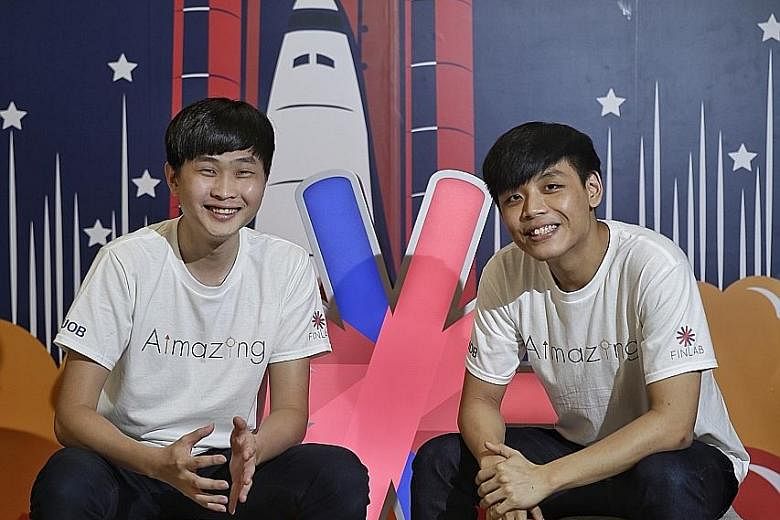Q How did Aimazing start?
Mr Ting After I graduated from university in Taiwan in 2015, I went to China. At the time, I knew of Alipay and WeChat Pay and I knew they were strong in the e-commerce space. But I didn't know they were also strong offline. When I went to China, I saw that all the convenience shops and small merchants accepted Alipay and WeChat Pay.
After two months, I returned to Taiwan and wanted to start a mobile wallet, but the regulations there were too stringent - I had to put up NT$500 million (S$22.6 million) in capital to apply for the required licence - so I decided to go back home to Johor Baru.
I came to Singapore to do research and realised it had a very good start-up ecosystem. So I decided to start my business here.
At the time, I couldn't speak English. I started speaking English only when I started this firm. I would bring my cousin to Singapore to help me translate when I needed to communicate with people.
I started off by creating a mobile wallet. I got some free space at NUS Enterprise, built up a team and worked from there.
Q What was the vision behind the mobile wallet you were creating?
Mr Ting We wanted to have a unique selling point. For example, Singtel's Dash app uses NFC (near-field communication) while DBS PayLah! uses the QR code to make transactions.
We wanted to combine the advantages of both - we wanted our mobile wallet to make quick, seamless transactions like NFC allows, but have it supported by all smartphones, like the QR code.
At first, we experimented with using the smartphone flashlight but we soon gave up. Then we realised every smartphone has a speaker and microphone, so we tried using sound and found that it works.
So the idea was to use sound in our mobile wallet and that would be our unique selling point. But after a year, we ran out of cash so we had two choices - raise more funds to sustain our business or pivot to business-to-business. We chose the second path.
Q How did you make the pivot?
Mr Yar As a mobile wallet company, it's very hard to differentiate from everyone else - there are so many big players in the market. So we took out the sound feature to sell to other developers of mobile wallets.
So, for example, take an e-payment app that uses NFC technology. Android users can use the app quite easily - they just tap their phone against the merchant's terminal and the transaction is done. But for Apple users, it's not so simple. They have to key in a merchant code first before they can make payment.
But if our technology is embedded into the e-payment app, everyone can tap and go.
Q How does it work?
Mr Ting The merchant can use its own point-of-sale terminal or smartphone and download an app. The user just has to hold his or her phone near the terminal or the merchant's phone when it's time to make payment.
When there's a beep, the transaction is completed. That's it.
So, for example, if the UOB Mighty app were to integrate our technology, the UOB customer just has to upgrade the app and then it would support this function.
Mr Yar The sharp beep is the sound of a transaction confirmation, like the sound made when you tap your ez-link card.
When the user initiates a payment, he is broadcasting information through ultrasound and when the two devices - the merchant's terminal and the payer's phone - hear each other, the transaction is done.
Basically our algorithm allows the two devices to communicate with each other through ultrasound.
Q What are your growth plans?
Mr Ting Singapore and Taiwan are our "branding" markets but growth opportunities in these two markets are limited because many banks already have their own e-payment apps and infrastructure.
When we go to them, they say they've already invested millions in their system, so even if our technology is better and cheaper, they cannot really justify changing everything now.
So we are focusing our growth strategy on Indonesia and Thailand.
In Indonesia, there are only 70 million people with bank accounts but the population is around 250 million. Our technology could easily filter through to the second-and third-tier markets there.
We are partnering a conglomerate that has a large employee base. We will develop the whole mobile wallet system for it and use its branding on it.
Then users can download their mobile wallet to use it at their retail stores. The plan is for the employees to start using it first, which would be a good test case, before the app gets rolled out to customers.
From there, we hope to work with other big companies in Indonesia and Thailand which can give us access to the end customers.


